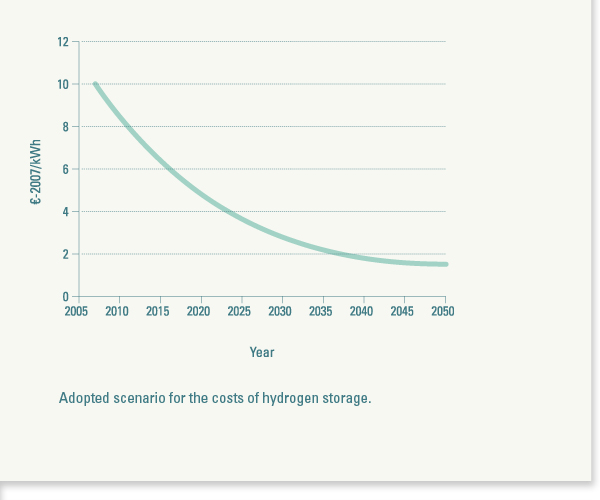Hydrogen contributes significantly to the total cost of the energy system, including, first, the cost of hydrogen generation, preparation and distribution from renewable electricity, and second, the derivatives of accumulation.
Equipment investment represents the highest cost for hydrogen production, heavily affected by the capacity factor used. The costs per energy unit in the study are higher than those considered in present studies, because hydrogen is used as an element for system control, so its capacity factor is lower. The adopted cost scenario is based on representative costs of the current technology and introduces general learning rates for technology.
With reference to accumulation, the scenario adopted is one of cost evolution, based on representative costs of the current situation, and implements learning technology rates.



